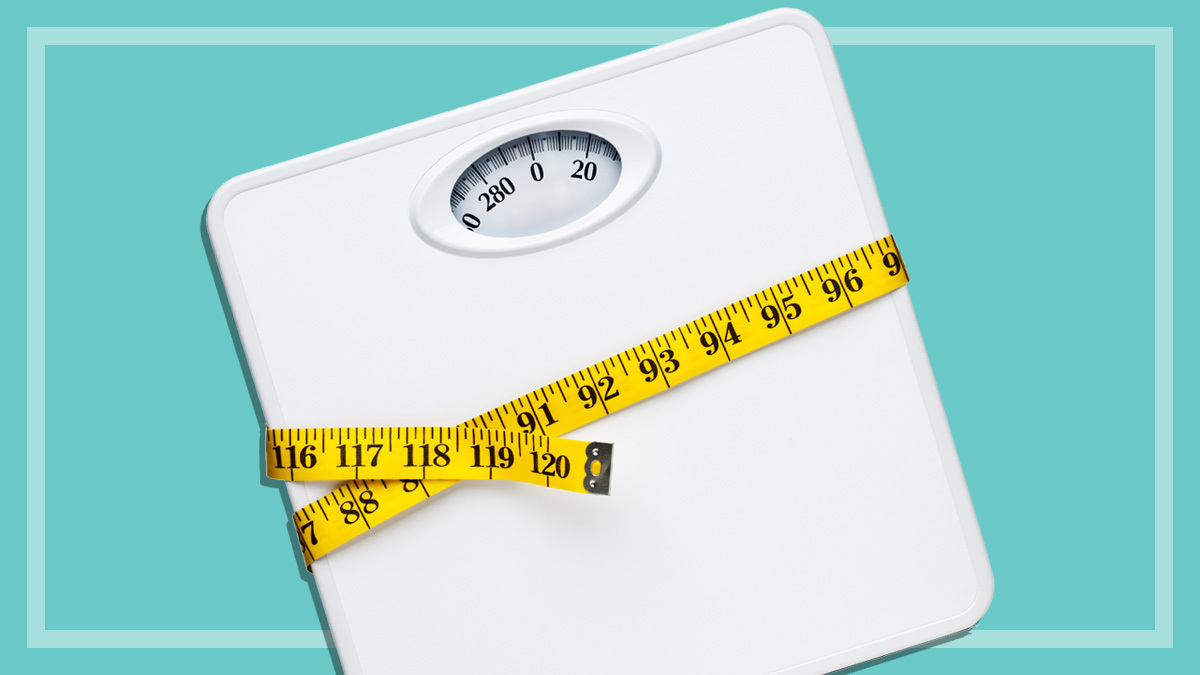Get our independent lab tests, expert reviews and honest advice.
Medical weight loss treatments that work

We all know that lifestyle changes – healthy diet and exercise – are the ideal way to lose weight and maintain weight loss. There are other physical and mental-health benefits, too, but many people with obesity find these changes difficult to stick to.
On this page:
If this is you, consider getting help from your GP. There are two main options they can help you with:
- Very low energy diet or meal replacement programs (such as Optifast, Optislim, KicStart and Tony Ferguson).
- Medication (such as Xenical, Saxenda and Duromine).
It’s not a substitute for a healthy lifestyle, and there are no guarantees of weight loss, but medical weight-loss options can be a useful extra tool to help people manage their weight. But they don’t come cheap – you’re looking at upwards of $100 a month for medication and $300 for meal replacements.
Very low energy diet (VLED)
A very low energy diet (usually called a very low calorie diet, or VLCD, on packaging) is one that replaces all your meals with specially formulated meal-replacement products, including shakes, soups and snack bars.
VLEDs are very well-studied compared with other weight-loss products, and have been used in clinical settings for more than 40 years.
Cost
Some of the main brands include Optifast, Optislim, KicStart and Tony Ferguson from pharmacies, and will cost you about $7.50–10.50 a day (though you’ll save money on other food). Isagenix is a more expensive version available for about $500 a month.
How do they work?
The products are low in carbohydrate, which helps keep the hunger pangs at bay, while also causing a mild state of ketosis, where the body burns fat as fuel.
The products are low in carbohydrate, which helps keep the hunger pangs at bay
A VLED is defined as up to 3350kJ a day. This sort of program generally lasts eight to 16 weeks (although it can be longer) with weight loss of 1.5–2.5 kg a week – and should be supervised by a doctor or dietitian.
Meal-replacement foods for a VLED typically provide 2000–2500 kJ a day when you have three, as recommended. You can add certain other foods, particularly vegetables. The strict version of the diet is only short term, but the individual products can be used indefinitely, replacing one or even two meals a day.
Are they nutritious?
The products include added vitamins, minerals and other nutrients to help you meet your daily requirements.
But a 2016 Australian analysis of eight such diets found that none met all daily nutrient requirements for either men or women in any age group.
Protein, in particular, was too low for most people, with the exception of younger, smaller women. Yet protein is likely to help you preserve muscle when you lose weight. The study authors noted that adding pure (whey) protein powder to the shakes, including two cups of low-energy vegetables, and in some cases adding some oil each day, will help people meet their nutritional needs without adding too much energy.
Side-effects
There are possible side-effects from VLEDs, mostly resulting from the decreased energy intake – sensitivity to cold, dry skin, temporary rash, temporary hair loss, low blood pressure, dizziness, fatigue, diarrhoea, constipation, muscle cramps, irritability, gallstones and menstrual disturbances.
Medication
Saxenda (liguratide), Xenical (orlistat), Duromine (phentermine) and Contrave (naltrexone/bupropion) are the only medicines approved for weight loss in Australia – and none are government-subsidised on the pharmaceutical benefits scheme (PBS) so you’ll have to pay full price.
Doctors can prescribe these for people with a BMI over 30, or people with a BMI of 27–30 and weight-related conditions such as pre-diabetes, type 2 diabetes, high blood pressure, high cholesterol or sleep apnoea.
Studies have found that typical weight loss is about 3–5kg, although results vary widely and can be greater than this or have no effect. Apart from weight loss, there may be other health improvements, including blood glucose, blood pressure and cholesterol levels.
It’s best to think of these medicines as tools to help you lose weight through a reduced-energy diet and exercise plan.
Xenical
Xenical (the brand name for orlistat) works in your stomach and intestine by stopping your body absorbing as much as 30% of the fat you eat, helping with weight loss.
It helps you lose weight when used in combination with a reduced-fat diet and exercise program. You take Xenical when you’re eating fatty food, so you’ll usually take a capsule with each of your three main meals a day (unless you know the meal you’re eating contains no fat).
When you’re using the drug, a really fatty meal can have you rushing for the toilet
When you’re using the drug, a really fatty meal can have you rushing for the toilet. Unpleasant side effects include oily bowel movements and seepage, flatulence, faecal incontinence, diarrhoea and abdominal pain. For that reason, you must limit the fat you eat in a day to less than 12g in each meal, and no more than 40g a day. To put that in context, a McDonalds Big Mac contains 28g of fat and a medium fries contains 15g – so it can add up pretty quickly. On the other hand, if you simply replace fat with sugar, you won’t lose much weight.
Apart from the gastrointestinal side-effects above, other potential effects include reduced vitamin absorption (you should take a vitamin supplement), headache and kidney stones.
Xenical is available over the counter for about $100 a month (if taken three times a day).
Saxenda
Saxenda (liraglutide) is based on a human hormone that suppresses appetite, and you inject it yourself daily. It’s prescription only, and is not subsidised by the PBS – it costs up to $400 a month by private prescription.
The main side effects are nausea, vomiting, diarrhoea and constipation. Less common, but more serious, side-effects include hypoglycaemia (especially for people taking diabetes medication), pancreatitis, gallbladder disease, renal failure and suicidal thoughts.
Some people also have a strong aversion to needles and may not want to inject themselves every day.
At almost $5000 a year for an average weight loss of about 5–6kg, the cost versus benefit needs to be weighed carefully.
Duromine
Duromine (phentermine) is an amphetamine-like drug that helps with weight loss by suppressing appetite. It’s not on the PBS, and costs about $100–140 a month, depending on the strength of the dose.
Like all amphetamines, phentermine’s side effects include tachycardia (rapid heart beat), palpitations, insomnia, anxiety and raised blood pressure.
Topamax
In the US, phentermine is available in combination with anti-epilepsy drug topiramate (Topamax and generic), which also works as an appetite suppressant.
Topamax is prescription only (off label) and costs $16 a month (plus cost of phentermine).
The weight loss with the combination drug, known as Qsymia, is greater than with phentermine alone.
Side-effects are relatively rare, but some are potentially serious, and include headaches, palpitations, insomnia, paresthesia (tingling, numbness, pins and needles), depression and suicidal thoughts, birth defects, and serious kidney and eye problems. An Australian study of 103 people had 61 drop out, including 41 because they couldn’t tolerate the side-effects.
Qsymia was rejected in Europe due to safety concerns – in particular the cardiovascular and mental health effects
Qsymia was rejected in Europe due to safety concerns – in particular the cardiovascular and mental health effects. The combination hasn’t been approved by the TGA for weight loss in Australia. Although the individual drugs may be prescribed ‘off label’ by a doctor and taken together when other treatments have failed or are unsuitable, the TGA has warned about the serious risks of using topiramate for weight loss.
Contrave
Contrave (naltrexone hydrochloride and bupropion hydrochloride) is a combination of bupropion, an antidepressant, and naltrexone, a drug often used to help people overcome opioid and alcohol dependency. Together they work to suppress appetite and reduce cravings for certain types of food. The drug was approved for weight loss by the TGA in 2019, but has been available overseas for more than five years.
Studies have found that using Contrave, in combination with a calorie-controlled diet and exercise, can increase weight loss by about 4.4kg on average, or almost five percent of total body weight. Your doctor will monitor your progress and, if you haven’t lost at least five percent of your body weight in 16 weeks, will probably stop the treatment.
The most common side effects are nausea or vomiting, dizziness, changed taste of food, insomnia, constipation or diarrhoea, headache and dry mouth. Serious side effects include a risk of seizure, which is higher in certain people; suicidal thoughts or actions; allergic reactions; and increased blood pressure or heart rate. It’s not suitable for people taking certain medications or supplements, which your doctor should ask about.
It’s not currently subsidised by the PBS, and costs about $240 a month for the full dose.
Cost comparison
Monthly cost of medical weight loss treatments
Very low energy (calorie) diet (e.g. Optifast, Optislim, KicStart, Tony Ferguson): $228 to $319
Saxenda: Up to $400
Xenical: $100
Duromine: $100–140
Topamax: $16 (plus cost of phentermine)
Contrave: $240


